When it comes to the top Metroidvania exploration games, Minishoot’ Adventures is the best contender featuring an immersive story and mechanics that hooks the players. The game features vibrant colors and a detailed environment that enhances the player’s experience as they progress.
Apart from the colors, it also engages players with a challenge with immersive boss fights that demand players to complete the challenge and uncover all the secrets the world has to offer. To discuss more about the world-building and unique setting, we spoke to the developers of Minishoot’ Adventures, SoulGame Studio.
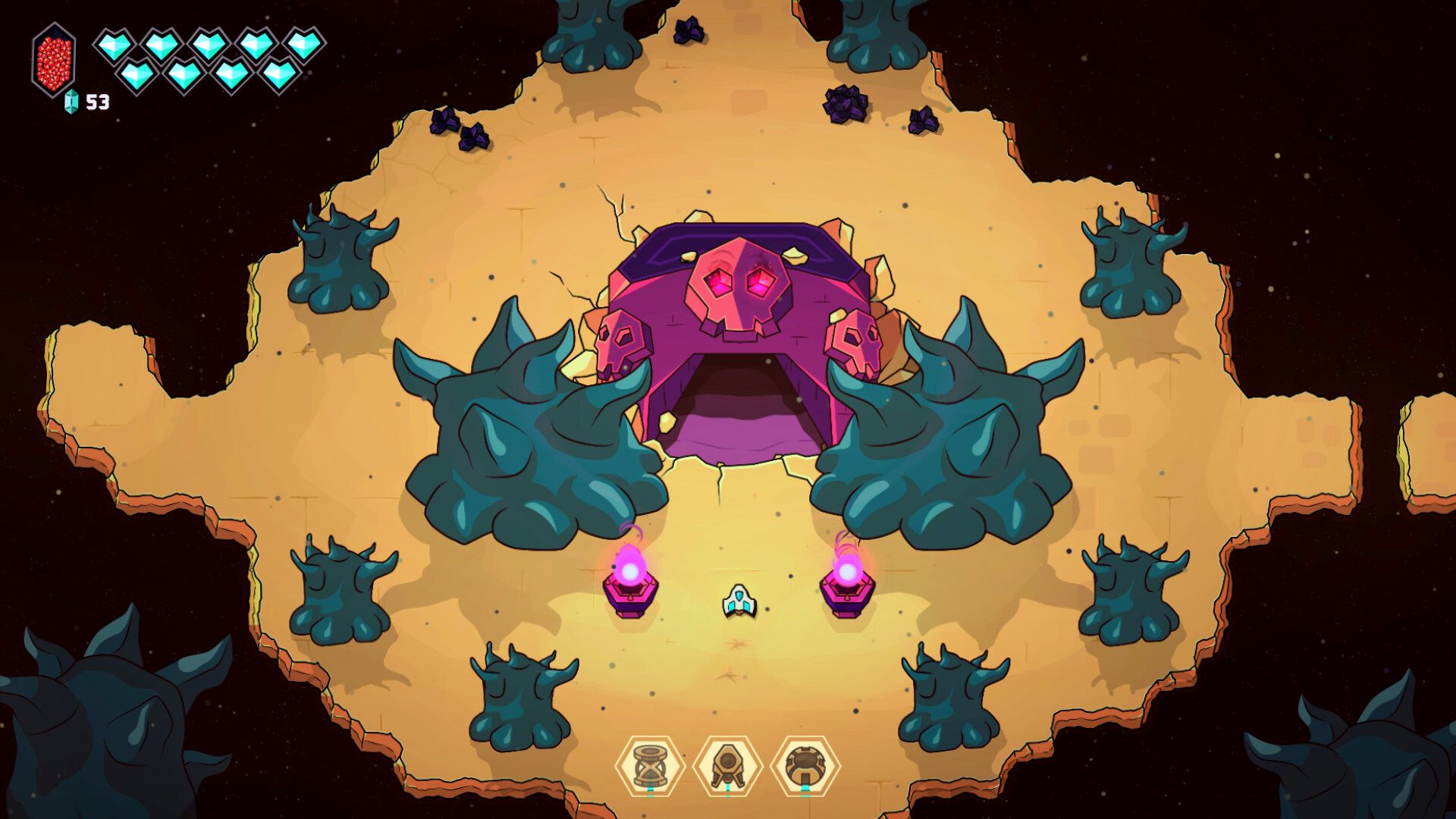
SoulGame Studio: Hello! We are two developers from the south of France. I’m Séverin. I worked on game design, code, and sound design for Minishoot, and my associate Adrien is the Game Artist and Visual Designer. We have been working together like that since 2011!
SoulGame Studio: The first inspiration was a game called Zolg. It’s a relatively modest Metroidvania twin-stick shooter that fascinated me despite its flaws and clunky gameplay, I just loved the combination, and I was simply craving for more.
Then I went back and played The Legend of Zelda (on Nes), and that really rekindled my interest in open-ended exploration. My hope was simple: I wanted to experience the simple pleasure of top-down satisfying core gameplay of dodge & shoot with a gameplay loop centered around exploring, dying, respawning, going out again, and venturing further.
I really like Zelda 1. Nothing is lost, no scoring, no rogue-lite, no random upgrade, no perma-death, but a Metroidvania-ish world to explore!
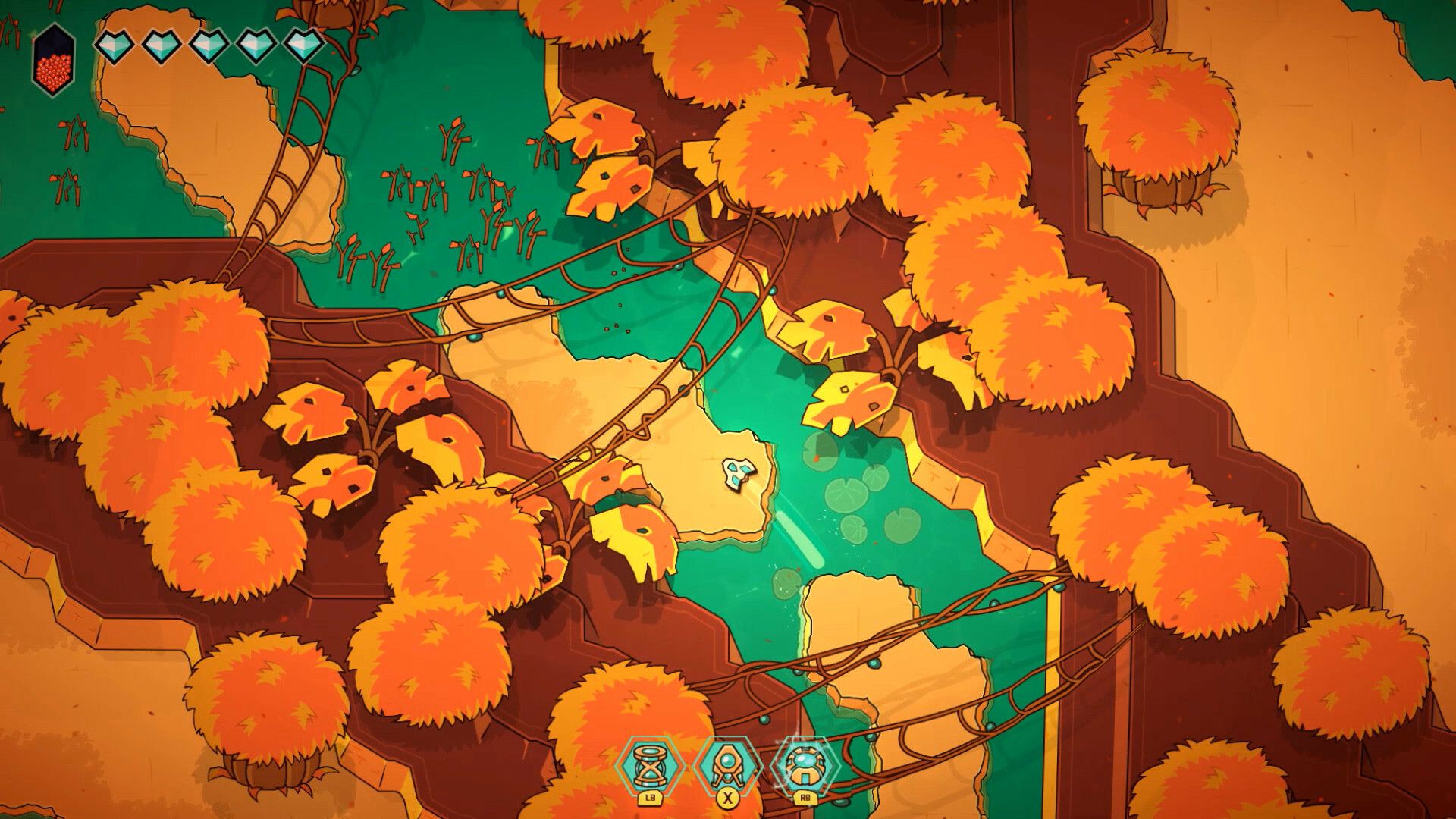
SoulGame Studio: Thanks for the kind words in the question! The process was straightforward but pretty long. First, Adrien drew a couple of big ship bosses. We kept the ones that we found the most exciting to confront. Then I designed their pattern based on their graphic design, trying many, many different patterns and only keeping the ones that felt the most fun and interesting to interact with in terms of movement, positioning, dodging, and shooting as well.
Avoiding frustrating situations as much as possible. This process was made possible by a very simple but powerful tool we designed with our friend and consultant, Maxime, allowing us to iterate quickly while creating complex pattern designs. Shootout to Reinier and Corentin, our interns who helped infuse many crazy ideas for some boss pattern design 🙂 After that, it’s just playtests, mostly from Adrien and me.
Over the years, I refined each boss’ design countless times… Coming up with stuff is the easy part; making it fun takes ages. For me, at least. The public playtest was where we kept refining more and more, always cutting what was unnecessarily frustrating. And it’s still far from perfect! But people seem to have fun, which is the only important thing.
SoulGame Studio: Regarding the music, the focus was to support the adventurous emotions: exciting overworld, mysterious cave, intense battle. Simple stuff! Then, as the development blossomed, the world map grew in size, biomes were added, the lore evolved, and music became more and more varied with more nostalgic/epic vibes, which I felt was matching the game surprisingly well, creating a contrast between the cuteness and the sadness/grandness. Also, having bullet hell combat on top of a melancholic track felt kinda cool to me!
Regarding the sounds themselves, it’s simple: I go online and listen to dozens, sometimes hundreds, of sounds for the feature I need. Then, I try them in the game until I find what I’m comfortable with.
Then I just ask the three questions: 1. Is the sound annoying? (It sounds like a low bar, but do not underestimate it!) 2. Does it fulfil its purpose by conveying adequate meaning for the action/interaction in question? 3. Does it add value to the overall game feel? That’s it!
I’m no expert in that area, and I rely mostly on my personal feelings. I always keep my ear honestly open when I play the game, and every time I get slightly annoyed or unsatisfied by a sound, I take it seriously and tweak it or replace it. By far the hardest sound I had to design for the game was the boost.
I spent ages looking for the right amount of “woosh” and “swoosh” that would feel powerful yet soothing and not annoying as you travel around. I also made sure to adjust pitch and volume based on your speed and angular speed so it feels good to drive around. I think that plays a big part in the controls feeling good.
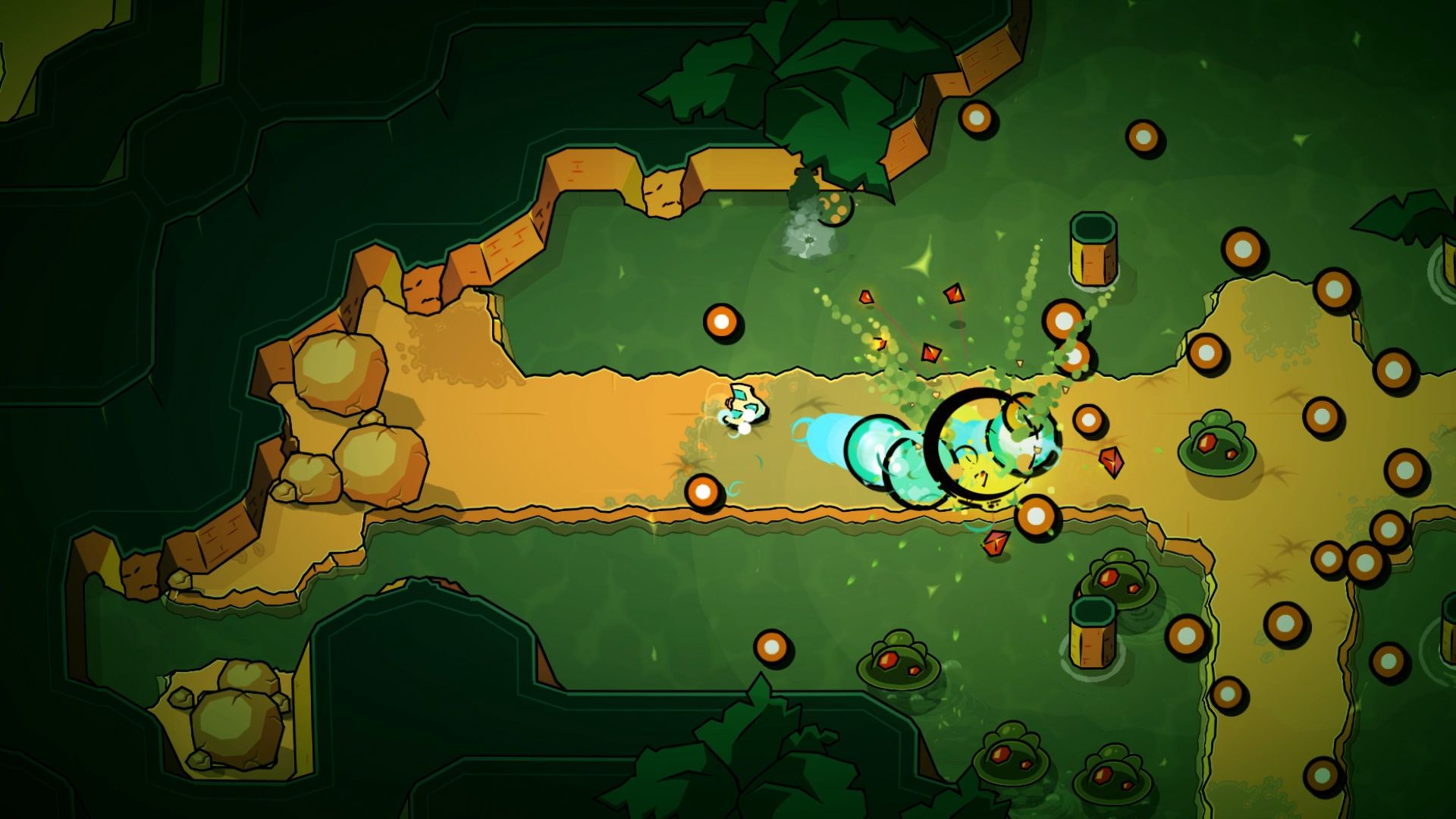
SoulGame Studio: Simply amazing. Seeing Minishoot’ sitting at 97% overwhelmingly positive rating with 1600 reviews on Steam is just a dream. That was a genuine life dream I had, for one of our games to reach that famous Steam rating and I didn’t dare to imagine Minishoot’ could do it! (sorry Minishoot’, I see you now!)
SoulGame Studio: I used a player experience-centric approach. At first, I didn’t care about balancing; I focused only on making everything feel good: movement, shooting, upgrades, powers, etc. Then, once I’m confident it’s all fun in both the early game and endgame states (e.g., slowest fire rate is okay AND fastest fire rate is super cool), I just interpolate the values, and then I fine-tune the adversity to match that progression curve, making sure that every encounter brings something new to the table as well.
I’m a strong believer that the challenge (level design & enemies) should adapt around what’s fun to do. When you’re the maker of the rule, there is no reason to stress over a hero ability being OP because you happen to also be the one in charge of the enemy ability 😀 After that, it’s just a very long process of “cutting everything annoying.” I keep testing, and I cut anything that feels annoying or frustrating. Felt that this enemy’s shots were unfair?
Make them slower, or remove one enemy, or make the arena bigger, etc. I have no mercy for my game design: if I feel it’s boring or see someone having the slightest annoyance, I just cut it out or redo stuff, and so in the end, when people play, I’m confident they will have only the good parts I left in there!
Obviously, there is no objective truth in this process, but I figured that if I can manage to make the game truly and honestly fun for myself, then it’s mostly fun for others as well. That’s true for pacing and game feel, at least. For the difficulty itself, I still wanted to add options to make sure all sorts of gamers and non-gamers profiles could enjoy the game as much as I could, and that worked out super well as well!
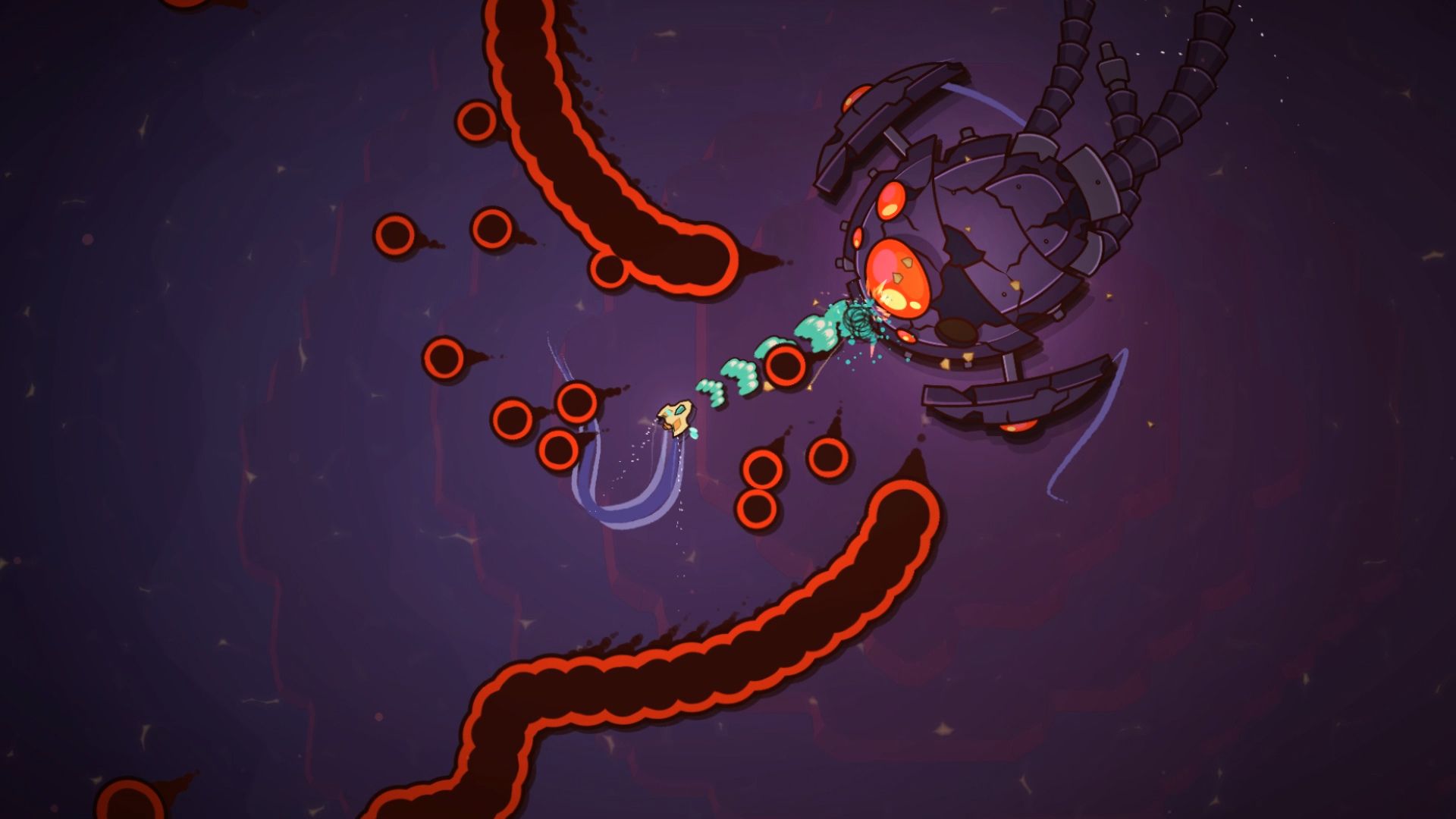
SoulGame Studio: Thanks for this cool question! Sometimes, it’s good to take players a bit out of their comfort zone because that’s where the real internal reward resides. But I know that’s a fine line that must be threaded carefully, and the game isn’t perfect at all in that regard, despite my best efforts.
However, I feel like the absence of maps and clear direction recenters everything around active navigation, memorization, observation, personal instinct, excitement for adventure, and mystery. You can’t really get the excitement of diving into an unknown cave if you just follow a GPS minimap to the treasure chest. 😀 To me, it’s about player intentionality and a meaningful, active decision process.
But for that to work, there have to be proper rewards. The drive for exploration is built on the trust that the game will eventually deliver on its promise. After all, why wander if for nothing? So I made sure to distribute proper rewards all around the map so that whatever players set themselves to do, they would get something in return. It might be progress on the main quest, a nice view, a teasing of a bigger treasure, an ally to rescue (which leads to another reward), a useful pickup, a valuable currency, or a unique module for their ship.
And even if you reach a dead-end because you miss a specific ability, you’ll find a shortcut nearby, so you can go back here faster next time. That turns a boring punishment into an exploration reward that facilitates future navigation.
Basically, I made sure to respect player time. If they try hard in a direction, they’ll find something worth the effort, not a boring consumable, a weapon they will never use, a spell that isn’t for their class, etc. I made sure everything was concrete, fun, and useful stuff that you can engage with.
N.B: the latest update (1.03) added a map detection system to facilitate gathering all the map pieces! Although I’m mostly happy with the exploration and level design, I wasn’t happy that some players were sometimes giving up due to not finding the map of the area.
That’s not intended and it was definitely a shortcoming I’m glad to fix. I wish I had more time to refine the level design further as well because I feel some areas are a bit misleading for no good reason. Will do better for my second open-world design for sure!
The game development started in 2020, so around 4 years. We are two creators, but along the way, we had the pleasure of getting some temporary companions from internships or consulting.
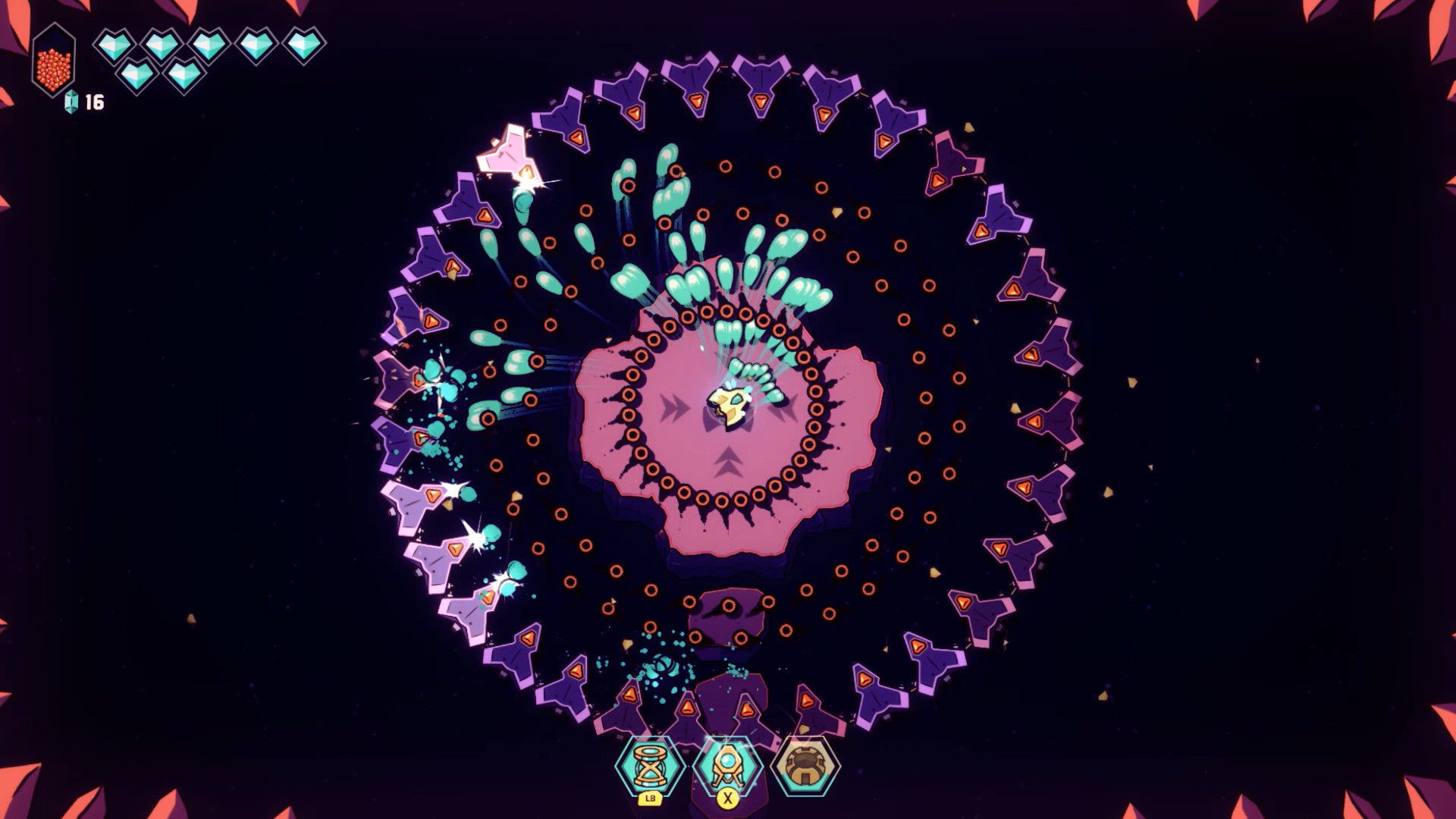
SoulGame Studio: The biggest issue was with scope. The scope of Minishoot’ evolved on its own, without our understanding or consent! We set out to make a small Metroidvania shooter and ended up making an entire Zelda-like without realizing it at first. It’s crazy when we think about it.
It all emerged organically from the premise (“top-down shooter, but it’s a Metroidvania”); we just kept pulling on the rope until Minishoot’ came out of the cultural magma in our heads! Other than that, I’d say keeping a clear and consistent artistic direction over a 4 years dev cycle was tough. Designing a semi-open overworld with an intricate cave system was a real mental and endurance challenge.
And, of course, with the ever-growing scope, maintaining the code base was a bit of a nightmare for me, and when we realized the entire world was boring and we had to redo everything over with more biomes, that was a hard blow for sure. But it was all worth it in the end, so we’re grateful for the recognition the game received.
SoulGame Studio: It’s currently in discussions; we check opportunities as they come in!
SoulGame Studio: I hope they will give Minishoot’s demo a shot!
Minishoot’ Adventures is a 2D Twin Stick Shooter focusing on exploration, developed and published by SoulGame Studios. The game was released on April 2, 2024 for PC.
Good job! Please give your positive feedback 😏
How could we improve this post? Please Help us. 💡
Nauman Shah is a VeryAli’s Guide Writer. With a background in Software Engineering along with immense love for video games and three years in Unity 3D games development, Nauman joined the writing media to share his thoughts around the world. Moreover, he likes to smash people with difficult questions on social media and watch shows with a cat named ‘Blep’.
Nauman primarily plays RPG and Open World Games – His Gamer Tag is #Sammich. You can check his gaming library and connect with him!



